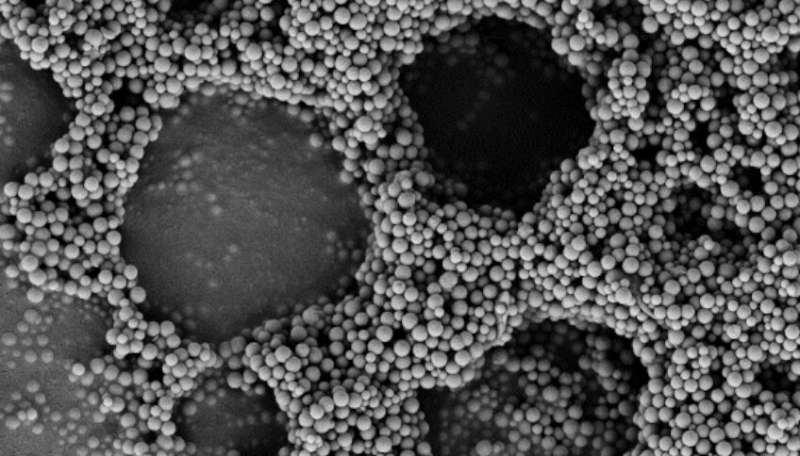Molecular burdocks: Peptides guide self-assembly on the micrometer scale

Molecular self-assembly is a well-known concept in supramolecular chemistry. Disordered molecules spontaneously organize themselves into larger structures through supramolecular interactions between the individual entities. It also works with nanoparticles, and researchers take advantage of certain functional groups attached to the particles to guide the particles' organization in a certain direction, e.g. as a basis for the design of new materials.
"In our study, we used specific self-assembling peptides to allow silica nanoparticles, which are still 100 nanometres in diameter, to build larger structures that looked like how we wanted them to be," says corresponding author Freddy Kleitz from the Institute of Inorganic Chemistry—Functional Materials.
The potential of short-chain peptides, especially so-called diphenylalanine, as drivers for the self-assembly of molecules into novel, larger structures (tubes, fibers, membranes, etc.) was already known. In this study, a team around Michael Reithofer from the Institute of Inorganic chemistry developed synthesis methods that enabled Diphenylalanine peptides to bond to colloidal nanoparticles.
"Our peptides have guided the self-assembly process: they coated the surface of the small particles and then kept the particles together, comparable to a hook-and-loop fastener," says corresponding author Michael Reithofer. The peptides are capable of self-assembly due to their own functional groups and molecular structure.
In order to organize the particles functionalised with peptides, the researchers used a unique evaporation-induced self-assembly (EISA) strategy; self-assembly took place in the course of the evaporation of a solvent in which the peptides and the particles were located. The scientists were able to significantly influence the shape of the end product by the choice of peptides and the solvent.
The research has been conducted in close cooperation with researchers from the NMR Center of the Faculty of Chemistry. Using NMR spectroscopy, it was possible to gain insights into the underlying mechanisms of the self-organization triggered by the peptides. "We are only at the beginning here, but our method opens a door to designing a large number of different materials—also with regard to a broad range of applications such as drug delivery systems or novel nanocatalysts," the researchers conclude.
The research was published in Angewandte Chemie.
More information: Cornelia Baeckmann et al, Evaporation‐Induced Self‐Assembly of Small Peptide‐Conjugated Silica Nanoparticles, Angewandte Chemie International Edition (2021). DOI: 10.1002/anie.202108378
Journal information: Angewandte Chemie International Edition , Angewandte Chemie
Provided by University of Vienna




















